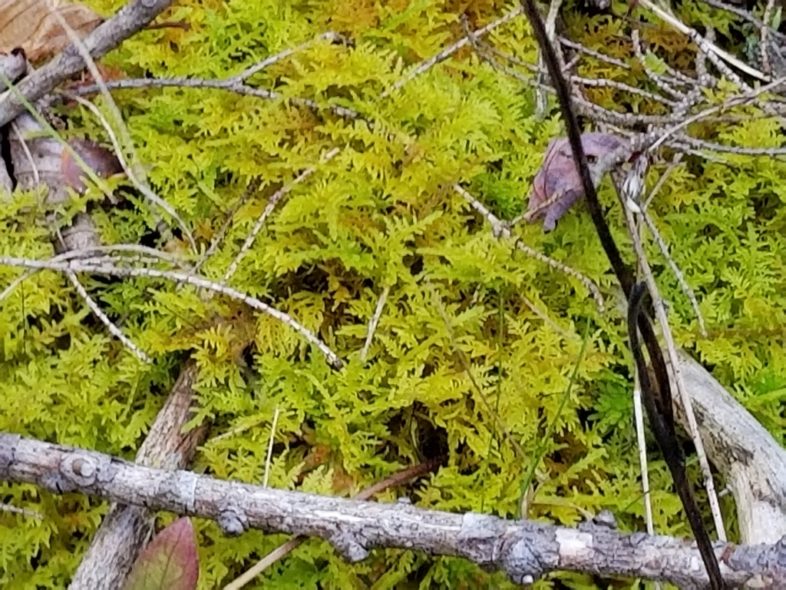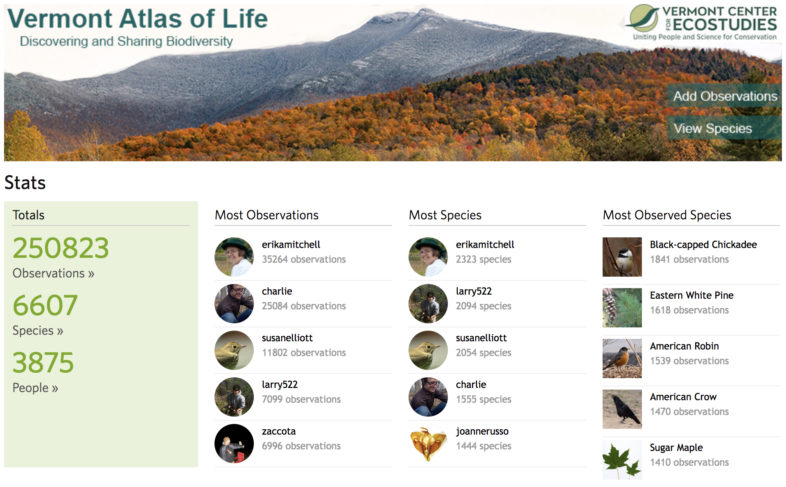Micki Colbeck snapped a photograph of a beautiful patch of Delicate Fern Moss (Thuidium delicatulum) in Hyde Park, Vermont and submitted it to the Vermont Atlas of Life on iNaturalist immortalizing it as the 250,000 observation for the project.

Delicate Fern Moss observation by Micki Colbeck. Click on the image to see it on the Vermont Atlas of Life at iNaturalist.
From moss to moose, fungi to falcons, over the past 6 years naturalists (3,875 of them) have helped us build one of the largest biodiversity datasets ever assembled for Vermont. It now contains information on 4,675 verified species records, including information on phenology, habitats, and more.
How many species occur in Vermont? You’d think we’d know this for a small state steeped in a rich tradition of naturalists. But, the simple answer is, no one really knows. We do know how many species there are of some of the popular taxonomic groups like birds (currently 382) and mammals (58). But how many invertebrates are there in Vermont? A back-of-the-envelope estimate puts the number at just over 21,400 species! There are about 2,150 species of vascular plants, with approximately 1,400 native plants. Not including protists, bacteria or viruses, we humans share Vermont with at least 26,000 to 45,000 species.
Join our growing community of citizen naturalists from around the Green Mountain State in discovering and sharing observations of Vermont life. Your observations can be turned into research-grade, citizen science data that will help us discover, track and ultimately conserve our natural heritage.


Wow, does this make me famous in the iNat world?
And beyond! Thanks Micki and I hope I see a ton more of your awesome mossing (like birding) in iNat!
You can see me in person every Thursdsy at VCE where I am working on a GIS internship.